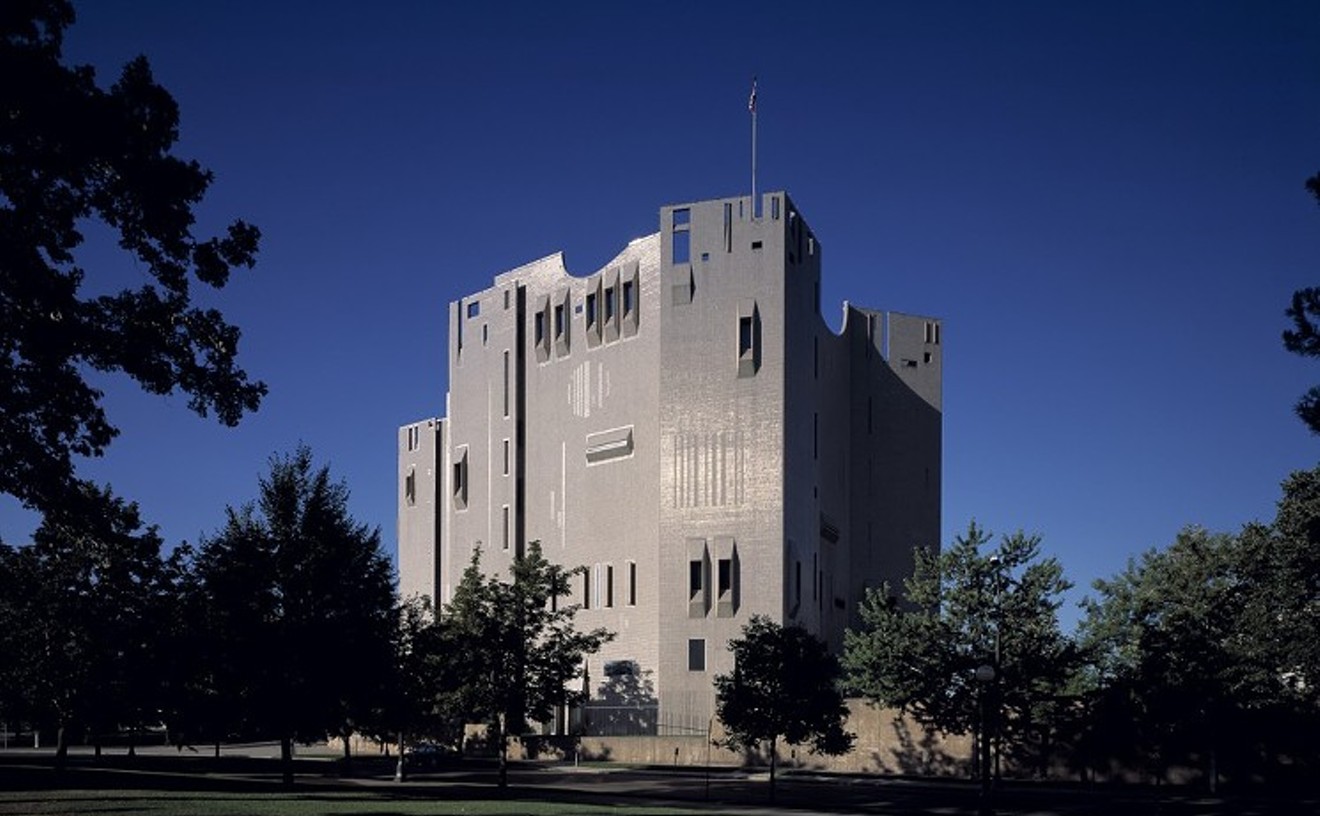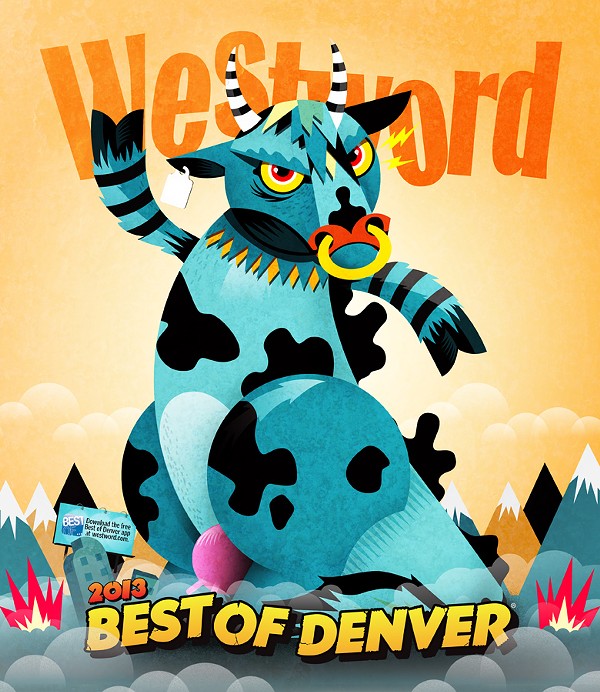After racking up awards — Nebula and Hugo honors for Best Novel — for his debut book, The Windup Girl, Paolo Bacigalupi followed up with Ship Breaker, set in an equally dismal, dystopian future, and won another round of awards, including a National Book Award nomination and a Printz Award for Best Young Adult Novel. The latest from the Paonia-based writer, The Drowned Cities, hit bookshelves last May. It was originally supposed to be a direct sequel to Ship Breaker, following its lead character, Nailer, but instead turned into a "companion" to that book. "I started really thinking about what it was that was important to me to be writing about," he told us last spring. "There was a single line from the original draft of that book that still resonated with me: Nailer and his compatriots had been sailing past this wrecked place of perpetual war called the Drowned Cities, and Nailer asks, 'How did the Drowned Cities get this way?' The captain of the ship says something like, 'A nation as strong as this one doesn't just fall apart. It has to be deliberately destroyed.... The demagogues just whipped up the people and the people bit on their own tails, and they chewed and they chewed until there was nothing left but the snapping of teeth.'" Bacigalupi bit off plenty with this book, but he delivered.
Best New Building Downtown
Denver Police Crime Laboratory
During the twentieth century in Denver, typically only one building was constructed each decade in the greater Civic Center area. That's changed, though, and since 2000, we've seen no fewer than eight new landmarks. Add to this exalted group the Denver Police Crime Laboratory, designed by the Durant Smith Group. Though relatively small in size, it's big in visual appeal, with folded plate walls zigzagging and cantilevering out above the ground, all carried out in mirrored glass, masonry and panels. And although the designers showed a clever disregard for symmetry, they gave the building a spectacular sense of balance. Only employees can get inside the crime laboratory, which is too bad, because a pair of impressive suspension sculptures, "Suspect" (which can be seen through the windows on West 14th Avenue) and "Bullet," both by Cliff Garten, have been hung above the main floor.
- 1371 Cherokee St., Denver, 80204 Map
Best New Club
NORAD

Following a stretch as the third incarnation of the venerable Muddy's coffeehouse, the triangular building at 22nd and Champa was home to quite a few dance clubs, including Club Evolution, the Loft, Club Ra, Gallery 22 and 2200. No one seemed to be able to make the venue work — until NORAD moved in. Owner Preston Douglas, who formerly wore multiple hats at Beta, clearly knows what he's doing, and he's hosted some of the biggest names in underground music since opening NORAD. With a sound system comparable to that of some of the biggest local dance clubs, this place keeps things pumping big time.
- 821 22nd St., Denver, 80205 Map
- 303-297-7884
- www.noraddancebar.com
Best New Curator
William Morrow

Last fall, William Morrow was named the Denver Art Museum's Polly and Mark Addison Associate Curator of Contemporary Art, joining Gwen Chanzit, the department's senior curator, who was named Curator of Modern Art. The distinction is that art from the early to mid-twentieth century is called modern, while work by artists active from the '60s to the present is referred to as contemporary. Morrow teethed on contemporary art as the founding director of 21c, a combination hotel and museum in Louisville, Kentucky (with branches elsewhere), that became the first place in the country to specialize exclusively in 21st-century art. He's currently putting the finishing touches on Nick Cave: Sojourn, a multimedia extravaganza opening in June that will focus on the Chicago-based artist, who pushes together dance, fashion and visual art.
- 100 W. 14th Ave. Parkway, Denver, 80204 Map
- 720-865-5000
- www.denverartmuseum.org
Best New Festival
Make Music Denver
The Downtown Denver Partnership sprung a sweet surprise on 16th Street Mall strollers last summer when it threw the mall's first Make Music Denver street festival, a participatory free-for-all that celebrated beats and blasts and reverberations from masses of musicians of all skill levels and age groups. Inspired by an international event with roots in France's Fête de la Musique, which started more than ten years ago, Make Music Denver invited professional ensembles, independent bands and armies of instrumentalists to gather on the mall and perform for free. There were mass-appeal, same-instrument combos throughout the day, featuring groups of ukuleles or fiddles or guitars. There were drum circles. There were teen rock bands. There were jazz combos and symphonic sections, and plenty of opportunities to join in or just sit back and enjoy. The basic idea behind Make Music Denver — that everyone, from concert pianists to three-year-old toddlers beating on a pan, makes music — is a winner; the fest will return on June 21.
Best New Hip-Hop Showcase
Quantized Fitness
Kalyn Heffernan of Wheelchair Sports Camp felt the need to create a quasi-clandestine hip-hop showcase as a way to stay connected to the art form's true creative sources. With the assistance of longtime friend and collaborator Qknox, Heffernan put on the inaugural Quantized Fitness at a local DIY venue in late December and used the occasion to release Qknox's debut mixtape. Inspired in part by L.A.'s Low End Theory, Quantized Fitness will be a monthly curated event for which Heffernan and her crew bring in noteworthy artists from across the hip-hop underground.
Best New Museum
American Museum of Western Art — the Anschutz Collection

Denver has been on a museum-building boom over the past several years, with the Clyfford Still Museum and History Colorado among the most recent projects. Unlike those glittering edifices, though, the American Museum of Western Art — the Anschutz Collection, which opened last May, is housed in one of the oldest buildings downtown, the Navarre, once a school for young girls. The beautifully renovated building is a fitting setting for Philip Anschutz's collection of Western art, which opened to the public last year. Anschutz started to gather up Western American art in the 1960s, paying pennies on the dollar by today's standards — but the collection that resulted is priceless. Anschutz relentlessly does things his way, so you can only see the AMWA by appointment two days a week, but it's well worth the trouble.
- 1727 Tremont Place, Denver, 80202 Map
- 303-293-2000
- www.anschutzcollection.org
Best New Music Festival
Blacktop Festival
The mainstream and underground arts communities don't come together often enough, much less in collaboration with the city. But when the organizers of Unit E were approached about doing a music festival on the grounds of the Denver Performing Arts Complex, they jumped at the chance. With the help of the city, which shut down part of Champa Street for the occasion, they put together an impressive one-day event that included acts like Cody ChestnuTT, Wild Pack of Canaries and Nurses, as well as street art, interactive sound art and a tent featuring local noise artists. The festival gave many people a taste of a world they would not otherwise have seen or gotten to experience. If we're lucky, the event paved the way for future collaborations between the city and street-level artistry.
Best New Music Venue
Grizzly Rock

In addition to being one of the state's best spots for country music, the Grizzly Rose has hosted its share of '80s hair bands. But when owner Scott Durland opened the Grizzly Rock last year in the former After the Gold Rush space, he started bringing hard rock back, starting with bands like Slaughter, Skid Row and Winger. And in addition to national and local rock groups, the 1,200-person Grizzly Rock has begun to book the occasional hip-hop act, like Naughty by Nature and Vanilla Ice.
- 5255 W. 6th Ave., Denver, 80214 Map
- 303-295-1330
- www.grizzlyrock.com
Best New Noise Project
Crablab
Katy Taylor was an unassuming resident of Rhinoceropolis for a year or two, but her quiet, thoughtful demeanor hid a vivid imagination. Her project with Alphabets' Colin Ward, Sex Therapy, is a jarring and electrifying foray into confrontational performance art. As Crablab, however, Taylor reveals her own unique creative voice, utilizing unconventional guitar noises, synths and tape loops and effects on her voice to make the kind of collage music many other people use computers to achieve. Emotionally, Crablab can be disquieting and quietly unnerving in a fascinating fashion, with the way Taylor creates unexpected sounds with her voice. But mostly the music sounds like a vehicle with which to express and dispel a deep sense of loneliness and melancholy. At other times, Taylor's sound experiments seem to come from that primal part of the subconscious mind that operates outside of language.





